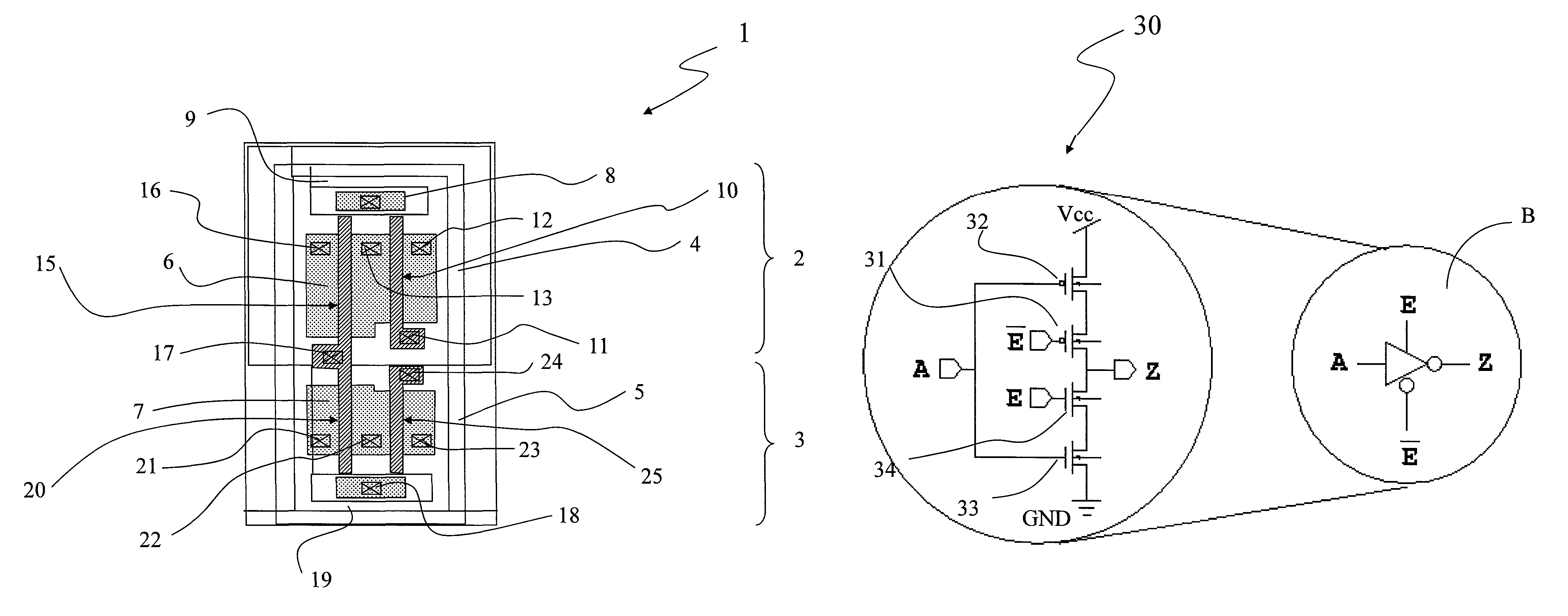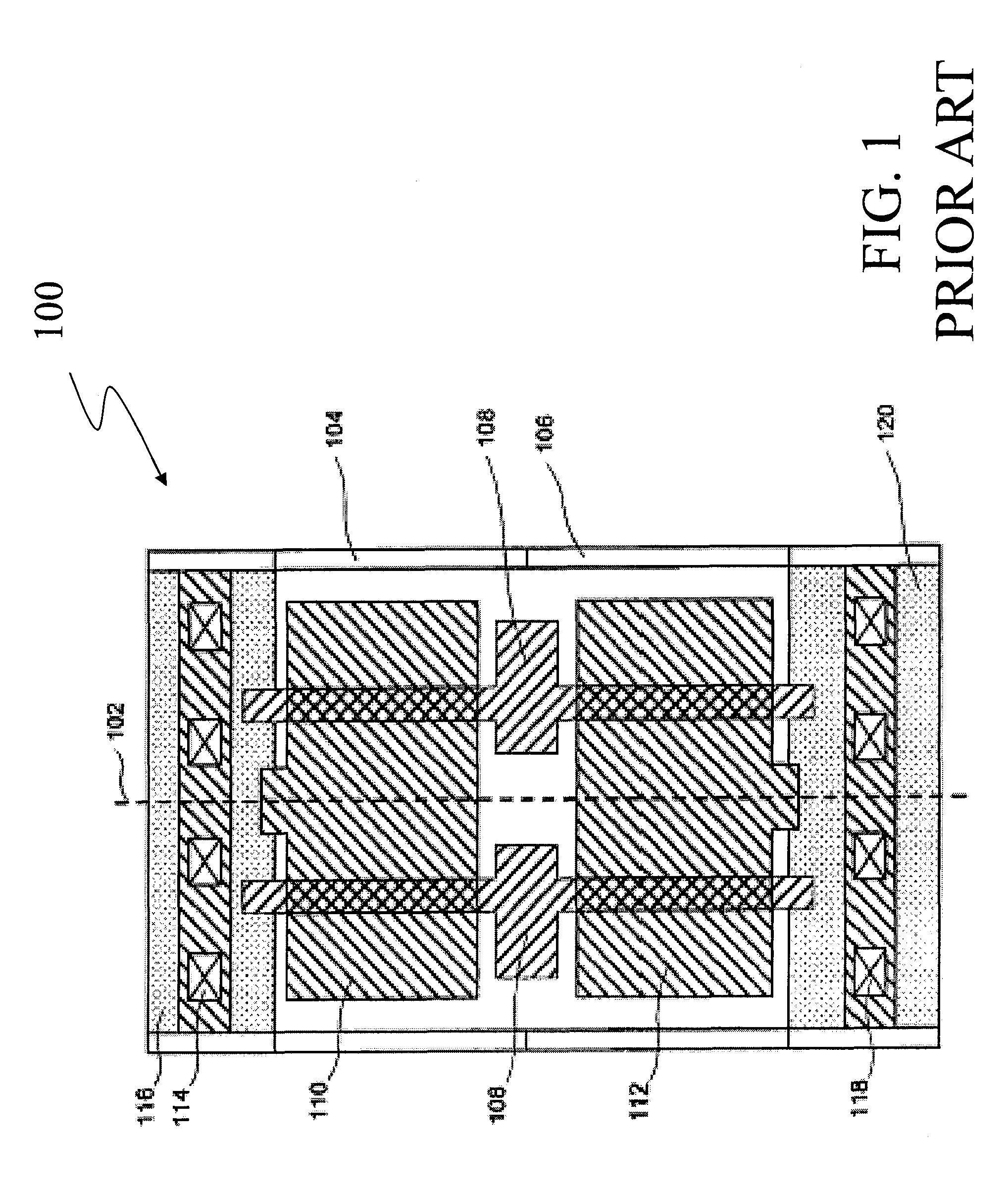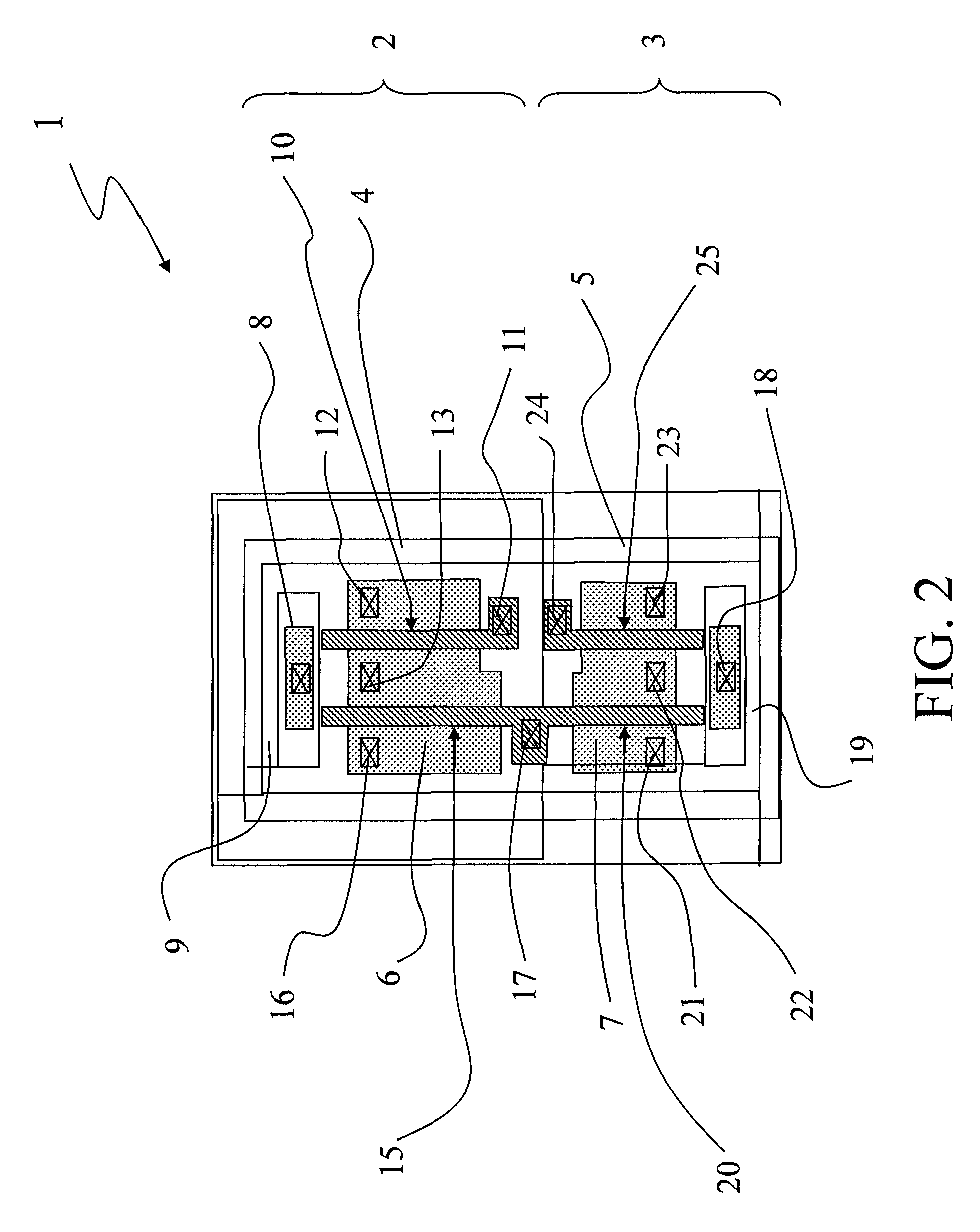Base cell for engineering change order (ECO) implementation
a technology of engineering change order and base cell, applied in the field of engineering change order (eco) implementation, can solve the problems of reducing the affecting the design of integrated circuits, and increasing the complexity of designs and designs, and achieving the effect of reducing design revision time and cos
- Summary
- Abstract
- Description
- Claims
- Application Information
AI Technical Summary
Benefits of technology
Problems solved by technology
Method used
Image
Examples
Embodiment Construction
[0054]Referring specifically to FIG. 2, a top view of a layout of a base cell 1 for an Engineering Change Order (ECO) implementation according to the present disclosure is shown. It should be noted that the base cell 1 is asymmetrical because of the lack of a virtual center line, with respect to which all patterns of material layers are symmetrically mirrored. In particular, according to this embodiment, the base cell 1 includes four devices such as NMOS transistors and PMOS transistors. A P side 2 and an N side 3 are thus defined in the base cell 1.
[0055]In particular, an N-well 4 provides a substrate wherein two PMOS transistors are formed and a P-well 5 provides a substrate wherein two NMOS transistors are formed. A P+ region 6 and an N+ region 7 are implanted on the substrates provided respectively by the N-well 4 and the P-well 5. In particular, the P+ implant of the P+ region 6 forms the source and drain regions of the PMOS transistors, as well as the N+ implant of the N+ regi...
PUM
 Login to View More
Login to View More Abstract
Description
Claims
Application Information
 Login to View More
Login to View More - R&D
- Intellectual Property
- Life Sciences
- Materials
- Tech Scout
- Unparalleled Data Quality
- Higher Quality Content
- 60% Fewer Hallucinations
Browse by: Latest US Patents, China's latest patents, Technical Efficacy Thesaurus, Application Domain, Technology Topic, Popular Technical Reports.
© 2025 PatSnap. All rights reserved.Legal|Privacy policy|Modern Slavery Act Transparency Statement|Sitemap|About US| Contact US: help@patsnap.com



